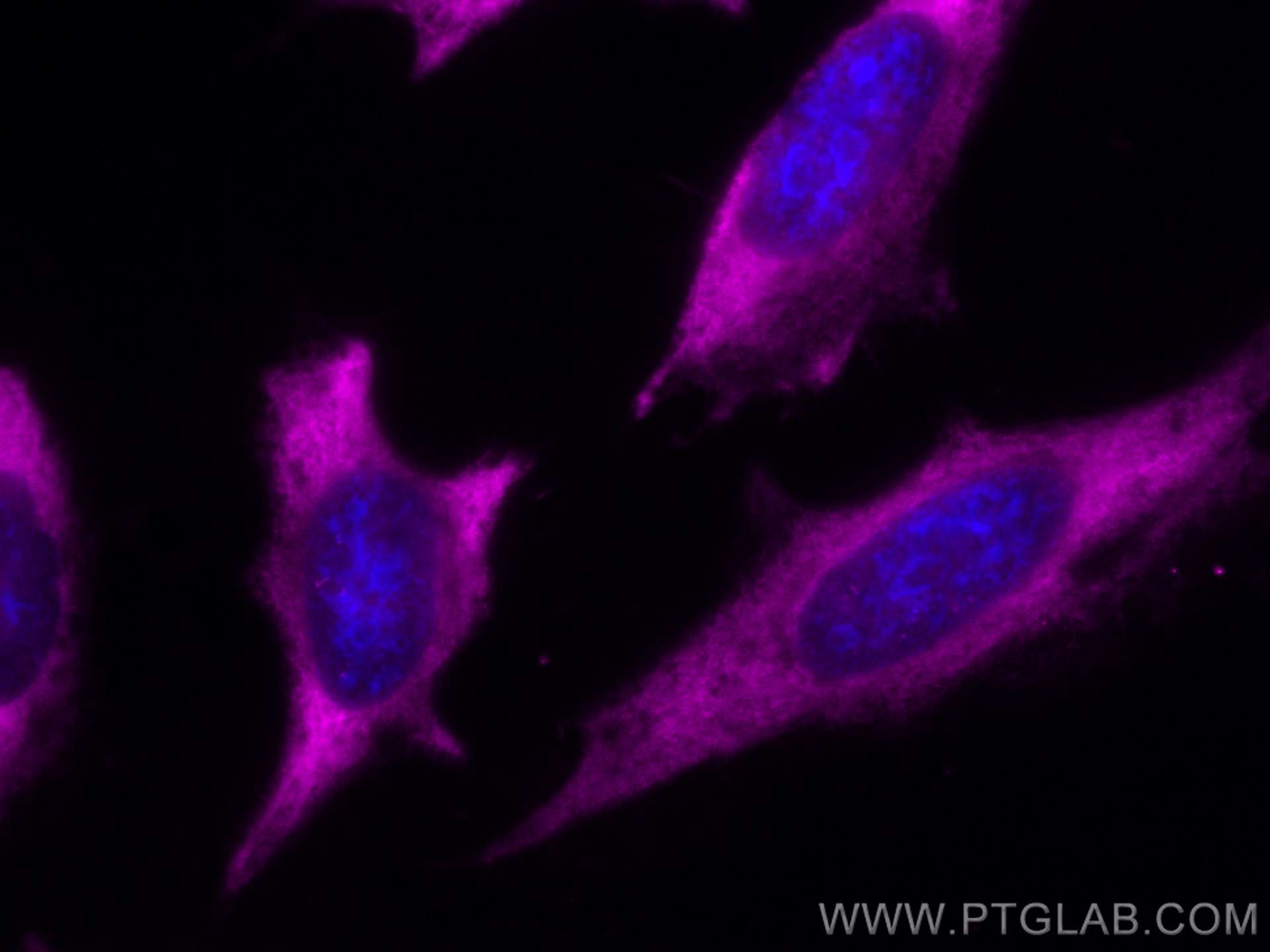Tested Applications
| Positive IF/ICC detected in | HeLa cells |
Recommended dilution
| Application | Dilution |
|---|---|
| Immunofluorescence (IF)/ICC | IF/ICC : 1:50-1:500 |
| It is recommended that this reagent should be titrated in each testing system to obtain optimal results. | |
| Sample-dependent, Check data in validation data gallery. | |
Product Information
CL647-66352 targets CAPRIN1 in IF/ICC applications and shows reactivity with human samples.
| Tested Reactivity | human |
| Host / Isotype | Mouse / IgG1 |
| Class | Monoclonal |
| Type | Antibody |
| Immunogen |
CatNo: Ag7413 Product name: Recombinant human CAPRIN1 protein Source: e coli.-derived, PET28a Tag: 6*His Domain: 356-709 aa of BC001731 Sequence: RQRVQDLMAQMQGPYNFIQDSMLDFENQTLDPAIVSAQPMNPTQNMDMPQLVCPPVHSESRLAQPNQVPVQPEATQVPLVSSTSEGYTASQPLYQPSHATEQRPQKEPIDQIQATISLNTDQTTASSSLPAASQPQVFQAGTSKPLHSSGINVNAAPFQSMQTVFNMNAPVPPVNEPETLKQQNQYQASYNQSFSSQPHQVEQTELQQEQLQTVVGTYHGSPDQSHQVTGNHQQPPQQNTGFPRSNQPYYNSRGVSRGGSRGARGLMNGYRGPANGFRGGYDGYRPSFSNTPNSGYTQSQFSAPRDYSGYQRDGYQQNFKRGSGQSGPRGAPRGRGGPPRPNRGMPQMNTQQVN Predict reactive species |
| Full Name | cell cycle associated protein 1 |
| Calculated Molecular Weight | 78 kDa |
| Observed Molecular Weight | 116 kDa |
| GenBank Accession Number | BC001731 |
| Gene Symbol | CAPRIN1 |
| Gene ID (NCBI) | 4076 |
| RRID | AB_2923953 |
| Conjugate | CoraLite® Plus 647 Fluorescent Dye |
| Excitation/Emission Maxima Wavelengths | 654 nm / 674 nm |
| Form | Liquid |
| Purification Method | Protein G purification |
| UNIPROT ID | Q14444 |
| Storage Buffer | PBS with 50% glycerol, 0.05% Proclin300, 0.5% BSA, pH 7.3. |
| Storage Conditions | Store at -20°C. Avoid exposure to light. Stable for one year after shipment. Aliquoting is unnecessary for -20oC storage. |
Background Information
CAPRIN1(Caprin-1) is a cytoplasmic phosphoprotein which may regulate the transport and translation of mRNAs of proteins involved in synaptic plasticity in neurons and cell proliferation and migration in multiple cell types. Its levels, except in the brain, are tightly correlated with cellular proliferation. Suppression of expression of human Caprin-1 resulted in slowing of the proliferation rate,which suggests its essential for normal cellular proliferation.
Protocols
| Product Specific Protocols | |
|---|---|
| IF protocol for CL Plus 647 CAPRIN1 antibody CL647-66352 | Download protocol |
| Standard Protocols | |
|---|---|
| Click here to view our Standard Protocols |




